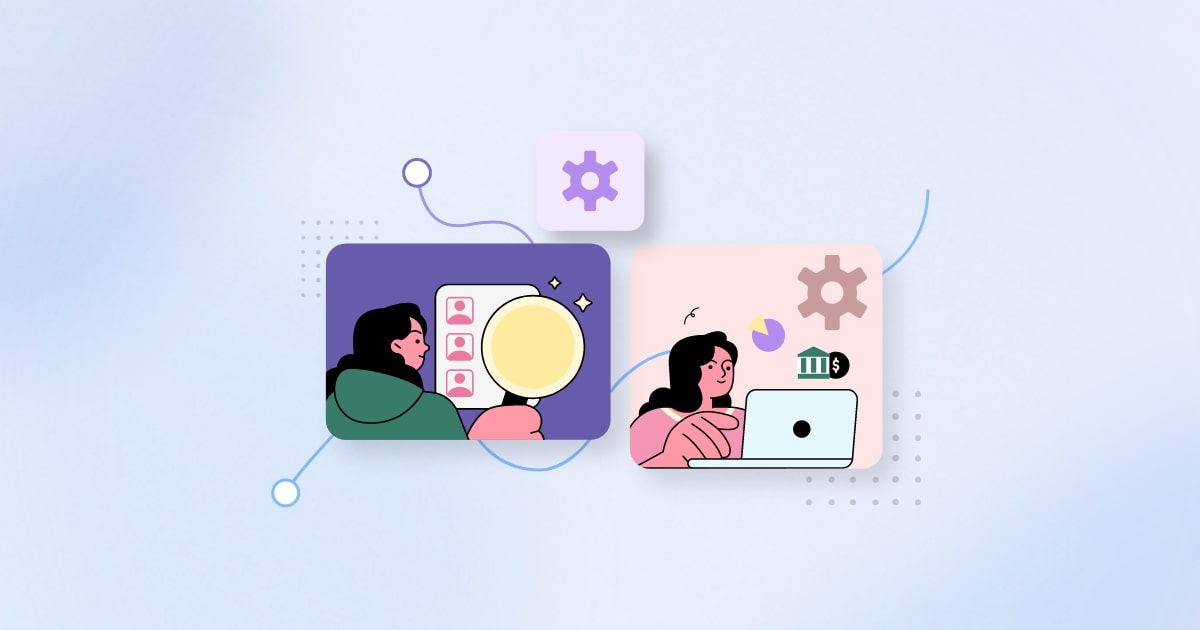Historically, HR teams have relied on static organizational constructs and external providers to support their organizational needs. For example, centers of excellence (COEs) offer on-demand expertise, shared services teams provide scalable and efficient support on repeatable tasks, and managed services or specialized vendors address peaks in demand or a lack of access to talent. But work, workforce, and workplace are shifting rapidly: traditional, siloed talent management practices and learning and development (L&D) content creation factories are not able to support the future of work.
Mature organizations are shifting to a harmonized workforce development model. Data analyzed from our 2020 High-Impact Workforce Architecture research illustrates organizations that systematically and simultaneously design the work, workforce, and workplace—and promote worker development as the core of their workforce strategy—outperform those that don’t.1
This research suggests it’s time to replace a siloed approach to talent management (of which L&D is often considered a part) with a harmonized view of what we call “workforce architecture,” which is the set of interconnected strategies, processes, and perspectives by which an organization deliberately and continuously synchronizes the workforce, the nature of work … and where that work can be accomplished in order to create value and lead through—not just respond to—marketplace disruption.2 How can organizations organize and connect their managed services and internal capabilities to deliver harmonized workforce development? We provide three suggestions.
Use platforms to fuse processes, technology, and human capabilities.
Platforms enable interaction between producers and consumers in any marketplace.3 Their ecosystem of technologies, processes, and tools integrate seamlessly into the business, becoming interwoven with the fabric of the organization. They can also draw people into their
work, facilitate worker interactions, match people to key information and resources, and create opportunities for participants to contribute to the platform in ways that benefit not only workers but the enterprise as well. In doing so, platforms leverage the organization’s collective intelligence while ensuring individual teams adopt and apply learning resources in a local context. At the same time, individual team learning and innovation can be shared with the broader enterprise in a virtuous circle of learning, development, and performance at scale.
Our interviews and analysis of relevant Deloitte projects found learning organizations are increasingly creating these platform ecosystems with repeatable, reusable objects instead of creating new content for each workforce capability- and skill-development need. Networking and connecting organizational capabilities (e.g., content creation, marketing and communication, technology administration, project management, curation, and operations) is one method that facilitates platform creation.6
Organizational learning capabilities are frequently housed within core L&D teams or COEs. For networking and connecting strategies to succeed, organizations need visibility into the services, learning architectures, offerings, and technology available across the enterprise as well as the culture, capacity, and ability to apply them. However, the connection with embedded learning resources is what brings expertise and access to the organization’s collective, effectively “flipping the switch” and turning on the platform mechanism. Doing so allows teams to curate before creating and borrow before building—especially when these practices are part of the organization’s learning philosophy.
Organizations that lack this connective tissue between a core learning entity and dispersed resources often experience misalignment in learning as well as negative business results. Organizations with inconsistent, duplicative, or heavy reliance on ad hoc content creation end up with a blurry view of career line-of-sight, a poor learner experience, and a limited ability to determine the full impact of learning practices. Reliance on core resources alone, without an extended platform ecosystem, inhibits the resulting end-to-end value of learning.
Perhaps more importantly, successful platform strategies develop resilience across the workforce by intentionally incorporating human capabilities and a desire for learning, reinvention, and security. Through this combination, both the workforce and the organization can adapt to a range of uncertain futures as well as address the immediate skills required. As a result, high-performing organizations that successfully provide what people need to perform in both their current and future roles realize better business outcomes than do lower-performing organizations.
Scale your capabilities to accelerate harmonized workforce development.
Our interviews with learning leaders reveal workforce development project teams are being formed and deployed to address problems and projects that require capability and skill development. High-performing companies organize work around solving problems , and the work of workforce development should be organized no differently.
That looks like workforce development teams composed of team members with core experience in doing the work organizations are trying to build skills for, complemented by workers with expertise in HR and learning who curate content, market products, administer tools, create outcomes, and deliver solutions for resilience and continuous workforce development. Team members with core experience in doing the work are “embedded” where the work happens, while other team members are connected and networked with similar teams in other groups. Instead of being structured around corporate functions or even geographies, these teams are organized, deployed, and then disbanded as organizational needs are met.
Managed services providers can offer the networked and connected capabilities needed to support the platform perspective—adjusting to meet varying demand. They can augment the core team embedded with the work, increasing the quantity and / or speed at which work gets done through flexible resources they provide. But unlike contingent staff or freelancers, managed services providers are intended to provide long-term partnerships. They have a vested interest in learning and meeting an organization’s needs, ensuring their services deliver at or beyond agreed-upon service level agreements (SLAs). That familiarity results in institutional knowledge that can be applied across an organization—even though they’re not part of the organization.4 Managed services providers also bring experience from supporting other organizations, widening the aperture of what’s possible.
Create impact with stewardship and connection.
Harmonized workforce development relies on a philosophy that requires acting beyond the traditional lines of the function to engage in stewardship, not ownership. Learning leaders can take on stewardship by serving as advisor, coach, and mentor for the teams building workforce capabilities and skills; learning philosophy evangelist to the C-suite; and cheerleader for the organization’s responsibility to support innovation, evolution, and adaptation through continuous learning.
We first saw evidence of learning leaders working this way in our 2019 research around the chief learning officer’s (CLO’s) role in the future of work. In that study, steward-type learning leaders described their role as facilitating workforce development through influence work—not ownership8 . Conversations from this 2020 study continued to reinforce the learning-leader-as-steward philosophy.
Learning leaders seeking to harmonize the work, workforce, and workplace tend to focus on organizational and individual performance rather than on a drive to demonstrate the impact and efficiency of specific HR interventions . This harmonized learning philosophy, coupled with a platform mindset, can result in a contextualized, personalized, and relevant learning experience for the workforce that simultaneously addresses the needs of workers and supports the purpose of the business. It creates value through learning in the flow of work, agile development, environmental enablement, and access to information. Best of all, it empowers individuals to influence their own work and learning.
Closing thoughts
Learning and development at work can lead to holistic change that affects the whole person—not just the person in context of work. Organizations that curate and foster experiences based on a belief in people’s potential (i.e., that they’re intrinsically motivated to develop) are most likely to create comfort, connection, and contribution—the basis of wellbeing—for their workforce. When workers are empowered to evolve, they will. And through that evolution, they’ll subsequently foster systemic people growth for others.

1– High Impact Workforce research, Deloitte Consulting LLP, 2020.
2– The Workforce Architecture Maturity Model, Deloitte Consulting LLP / David Mallon et al., 2020.
3– Ecosystems, Platforms, and HR: Mindsets for Becoming Digital, Deloitte Consulting LLP / Jeff Mike, EdD, and Madhura Chakrabarti, 2017.
4– Learning as a platform: Redefining how learning delivers value to the business, Deloitte Consulting LLP / Michael Griffiths et al., 2018.
5– Ecosystems, Platforms, and HR: Mindsets for Becoming Digital, Deloitte Consulting LLP / Jeff Mike, EdD, and Madhura Chakrabarti, 2017.
6– The other three practices are adopting a common language or taxonomy for capability and skill development; intentionally connecting workforce strategies to rewards, performance management, wellbeing, DEI, and learning; and using technologies that support content curation, versioning, and repurposing.
7– High-Impact Organization Design research, Deloitte Consulting LLP, 2018.
8– A CLO’s Job in the Future of Work: 4 Key Findings, Deloitte Consulting LLP / Julie Hiipakka, Timothy Davis, and Michael Griffiths, 2019.
9– A CLO’s Job in the Future of Work: 4 Key Findings, Deloitte Consulting LLP / Julie Hiipakka, Timothy Davis, and Michael Griffiths, 2019.
10– Learning as a platform: Redefining how learning delivers value to the business, Deloitte Consulting LLP / Michael Griffiths et al., 2018.




